
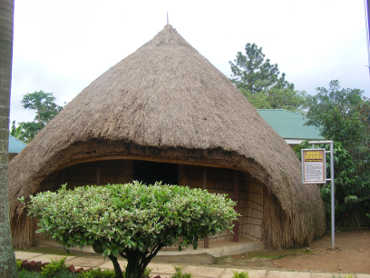
A piece of Kasubi tombs that survived being burnt when the bigger Kasubi tombs were torched a few years ago
For Kampala, tourists and local folks have been made to erroneously believe there is nothing to see besides the Kasubi tombs. In this report, William Odinga Balikuddembe highlights the untapped potential of Kampala’s tourism.
On a sunny January afternoon, Andrew Bamweyano stands outside Kasubi Tombs watching vehicles pass by. Inside the newly built concrete wall fence, men are re-erecting the main shrine, Muzibu Azaala Mpanga, where remains of four Buganda kings lie.
“They are about to roof it. We are told the house should be finished by March,” the young royal, who volunteers as guide,” says.
From his base in Bulange-Mengo, Charles Peter Mayiga, the Katikkiro (Prime Minister) of Buganda continues to call upon Ugandans to contribute to the reconstruction of the tombs which on March 16, 2010, were gutted by a fire.
On top of Ushs 2bn from the Ugandan government and $500,000 (about 1.25bn) from UNESCO, contributions from Kingdom enthusiasts had by October 2013 brought the figure to Ushs 6bn. Another Ushs 4bn was needed to complete the works, according to the kingdom spokesman Denis Ssengendo.
Kasubi tombs
First built in 1881, the royal tombs on Kasubi hill are of cultural and spiritual importance to the Baganda, Uganda’s most populous tribe. Here lie Buganda Kings Walugembe Muteesa I (1835-1884), Mwanga II (1867-1903), Daudi Chwa II (1896-1939) and Sir Edward Muteesa II (1924-1969). In 2001 the tombs were declared a World Heritage Site by UNESCO – a category of places with special cultural or physical significance. This is a popular tourism site that even when it is under reconstruction, people still visit it.
The royal tombs are rising again – but as they rise, a dozen or more tourism sites lie largely unnoticed in different parts of Kampala, the capital city of a country marketed as the Pearl of Africa.
Tourism Information Centre
At the National Theatre is the Tourism Information Centre. A team led by Uganda Tourism Board Senior Marketing Officer Sylivia Kalembe bases here to market Uganda’s tourism. A young man by the name of Sammy hands me the map of Kampala. Disappointingly, it has no tourism sites indicated on it. Instead, it prominently shows Hotels as places for accommodation, Communication masts, Main Road, Hospitals, Police Posts, Sports Grounds, Fuel Stations, Traffic Lights, Bus/Taxi stop (Stage), Airport, Schools and Churches.
“Over the years the challenge we have had is that we have been underfunded. There are so many things we could do but we can’t,” Kalembe tells me. “But the future is positive. We are working on a tourism master plan.”
The National Theatre
The National Theatre, itself a cultural tourism site and part of the Uganda National Cultural Centre (UNCC), towers above craft shops that are right behind it. The previous administration transformed it into a place of meetings, parking yard and business centre than a collection or a home of Uganda’s cultural diversity. Ironically, at times when the parking yard is let out, say to Mps, tourists have found trouble accessing the cultural village to buy some art collections.
The new management which took over at the end of 2013 promises to carry out radical reforms, which could hopefully include transforming the centre as a major tourism centre, along with theatrical rejuvenation.
Fort Lugard
Located on Old Kampala Hill, I had to first pass by it three times and ask for direction four times in a radius of 200 metres before I could locate it. Captain Frederick Lugard’s fort which is nestled between Gadafi Mosque, a business block and a hospital at old Kampala hill, represents Kapala’s first house.
Had the original Lugard house not been demolished to create room for the gigantic Gadafi mosque, Lugard’s house would be one of the enduring symbols of colonization by the British. Lugard was sent to Uganda by the British East Africa Company in 1890. He was a Military Administrator for Uganda between 26 December 1890 and 1892.
This hill was a hunting ground for the Kabaka because of the high population of the Impala – from which the city, Kampala, would later derive its name. A shoe shine who sits less than 20 metres away from the fort entrance did not know Fort Lugard until I showed it to him, despite having worked there for two years. The original Lugard house was demolished in 2008 and replaced with another.
An empty car park and virgin lawns one sees as they enter indicate very limited activity at the fort. The only signpost at the entrance of Fort Lugard is that of private tour company BEVMO – they rent space in the Lugard House from the Buganda Tourism Board, the custodians of Fort Lugard.
“There used to be people here who would explain the history of Lugard but they have all left. The first house in Kampala was built here by Lugard. His house was grass thatched. When they were extending the mosque they broke the house,” Irene Nzaireki, a travel consultant with BEVMO attempts to explain.
“They can remove the building but history remains. It stays in the minds of people,” she adds.
A few pictures of some traditional leaders, including the Omusinga Charles Wesley and King Daudi Chwa hung on the walls. Apart from a single portrait of Capt. Lugard, there is almost nothing else to discover about Lugard from his house. Nzaireki tells me I am not allowed to take pictures until I have permission from the Buganda Tourism Board which, at the moment, has no representatives at the fort.
“Did you find anyone there [Fort Lugard]? Rose Mwanja, the commissioner for Museums and Monuments would later ask me after mentioning to her my visit to Fort Lugard.
“For some reason we don’t talk about Fort Lugard so much. Probably because it is not so much in the literature,” Kalembe would later tell me.
Kampala has over 15 tourism sites of national prominence, most of them historic buildings.
“The Indian buildings in Old Kampala tell a lot about this city. You can learn about who was the first businessman in Kampala. Indians came with new ideas, with designs of buildings from India, UK and other places,” Mwanja says.
Key tourism sites in Kampala (Greater Kampala) include the Nakasero market structures, the Royal Mairo (from Lubiri to Bulange), Namugongo martyrs shrines, Budo-Nagalabi, Wamala tombs, the Independence monument and the clock tower.
Rubaga and Namirembe cathedrals, Bahai temple, Ghadafi and Kibuli Mosques, Parliamentary Building and Nommo gallery are potentially big tourism sites, if only they are appreciated and promoted. To many Ugandans, however, there is nothing of tourism in Kampala beyond the National Museum and Kasubi tombs.
“A girl at UTB told a tourist: ‘here in Kampala there is nothing to see. May be you go to the National Parks,'” decried Tourism, Wildlife & Antiquities Minister Maria Mutagamba at a meeting of editors and media owners at Hotel Africana this week. “When we have conferences we get government cars to drive the delegates. My driver does not know anything about tourism. We need the private sector to be doing this.”
The Uganda Museum
Established in 1908 first at Lugard’s fort, the Uganda Museum is the ideal place for one to obtain visual, oral collections of Uganda’s heritage. Uganda’s only national museum escaped demolition a few years ago as a proposal mooted to build there a skyscraper was defeated by public outcry. Rose Mwanja has worked here since 1990 – although she only became commissioner in 2008.
The biggest number of visitors to the museum are school children, Mwanja tells me, because key areas of the museum are supporting the primary school curriculum. Each child is charged Ushs 1000 while adults pay Ushs 2000. The money goes to the government treasury.
Although the fees seem minimal, Mwanja feels people should not be made to pay them.
“In other countries people don’t pay for museum. Most of the things in the museum were donated by people. This is their heritage. Why are we charging them?” She asks. “We want a policy that allows people to see their heritage. If you want money from them put there powerful gift shops but let entrance to the gallery be free.”
Mwanja says that much as policy changes are required, there is need for proper packaging of Kampala’s tourism products.
“Kampala’s tourism is not yet there, not the best. Visitors come to town and ask tour operators ‘where should we go?’ Kasubi Tombs, Uganda Museum, what next? These are the only two places that tend to speak for themselves,” Mwanja says.
UTB head of marketing Edwin Muzahura says restructuring in UTB is expected to yield better results in tourism services. He told media chiefs: “In about six months or so we shall have a bus or two to do organized city tours.”
Formal tourism promoters admit that Kampala’s tourism requires a lot more attention, but contend that its the duty of all Ugandans to promote a good image of their capital.
At the heart of the problem seems to be a general lack of consciousness among most Ugandans ranging from politicians, city administrators and others in positions of responsibility to conserve and preserve common items as tourist attractions.

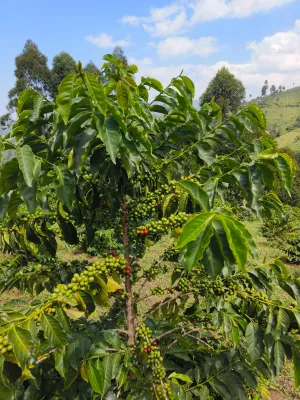

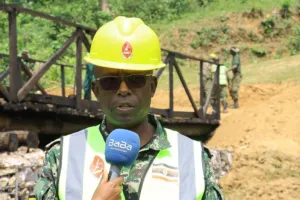




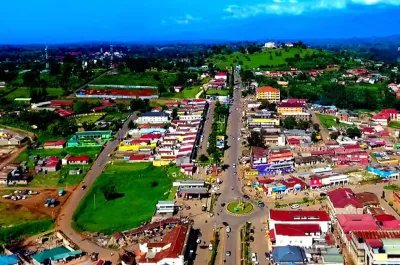




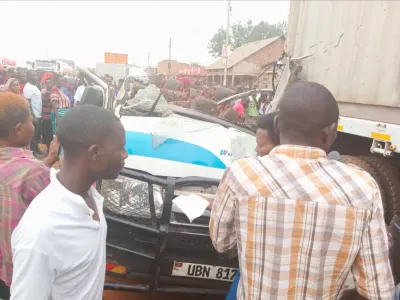
Sunrise Admin
Leave a Comment
Your email address will not be published.